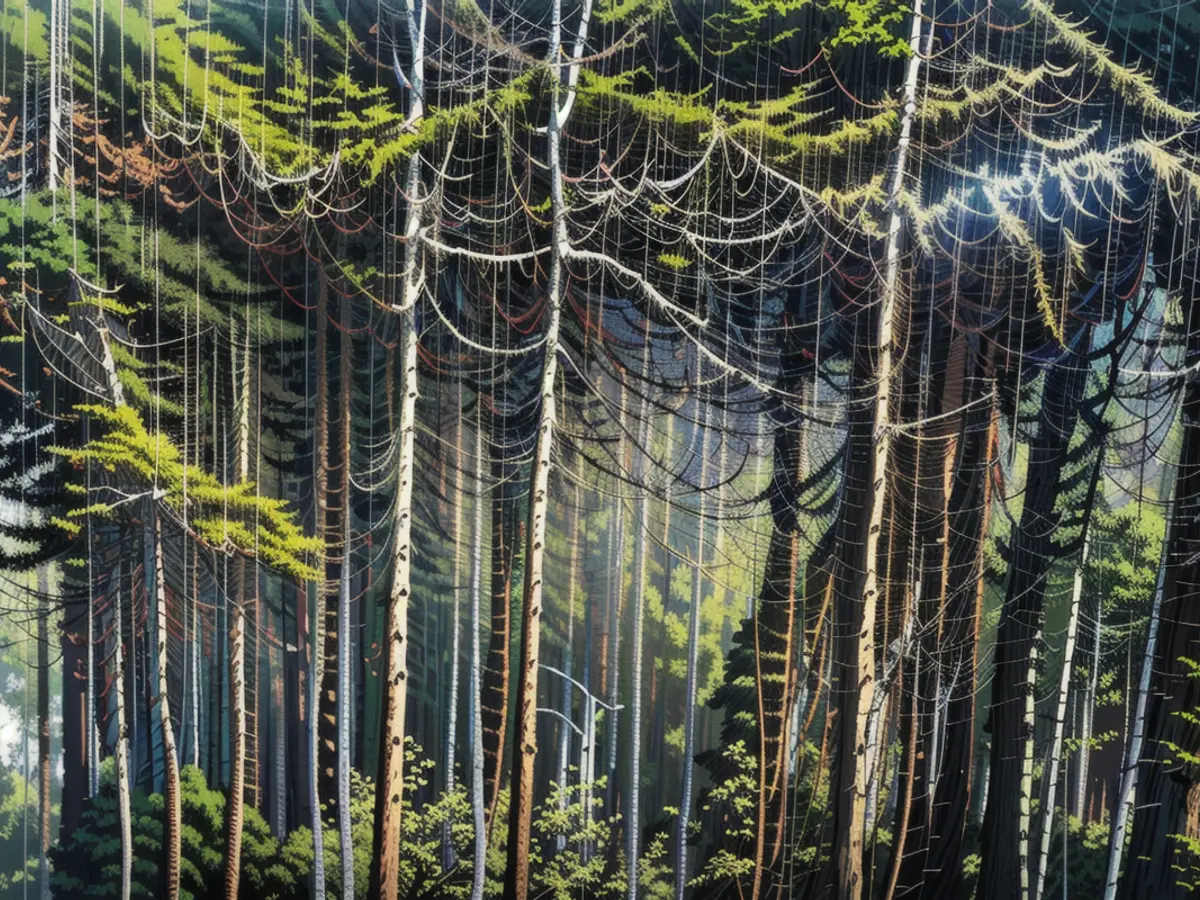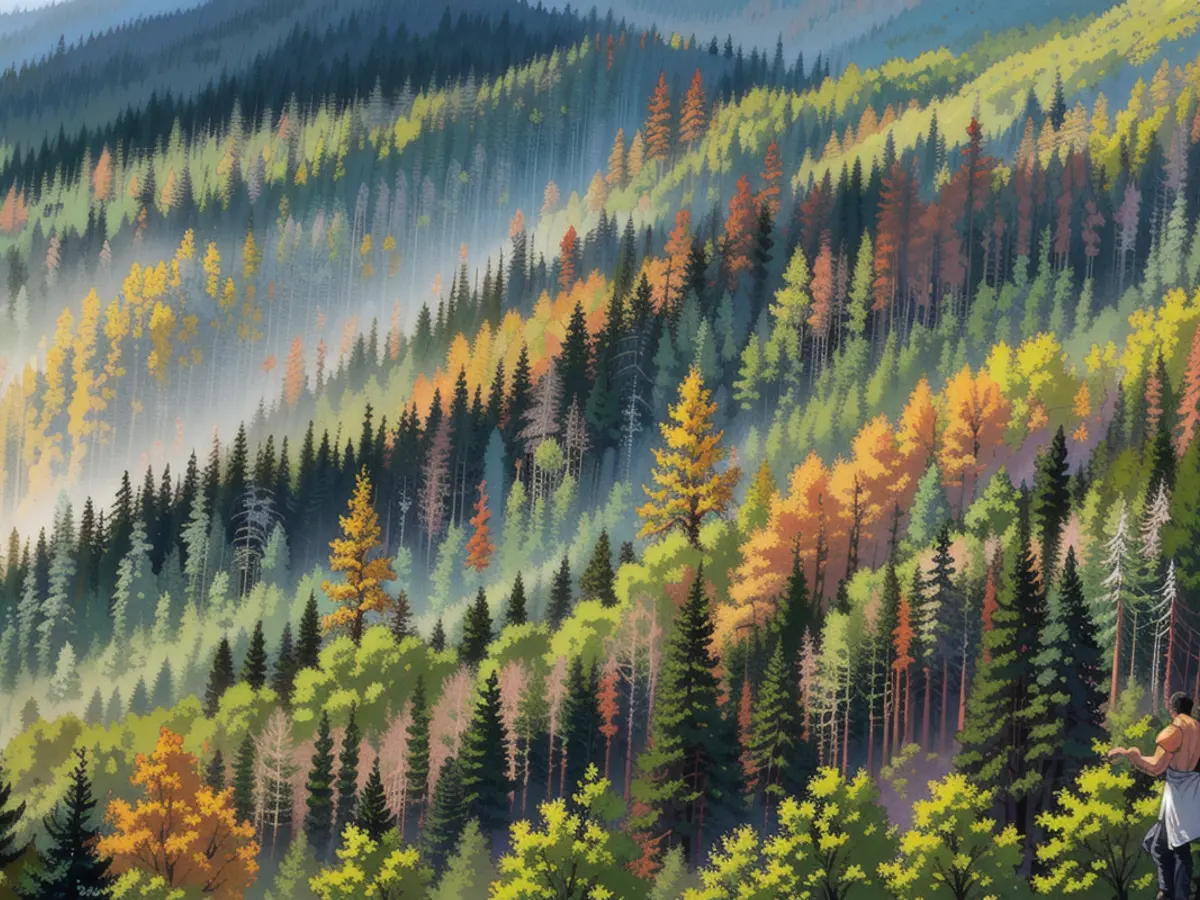Limited choices remain among tree species for forest conversion.
Europe's forests face a critical transformation due to the changing climate. The problem is that fewer and fewer tree species are adaptable enough to endure the climate shifts.
Dead spruce-covered slopes in Germany's low mountain ranges highlight how the climate crisis is spurring forest revamps. Various projects across Europe have been implemented. A new report now shows that the number of suitable native tree species is diminishing. If current trends continue, up to half of them may no longer withstand the climate circumstances by the end of the century, depending on the region. "This is an immense decline," says lead author Johannes Wessely from the University of Vienna, "especially when you consider that not all of the species are relevant for the forestry industry."
Tree mortality has skyrocketed in Europe over the last three decades, according to the research team, which published its findings in "Nature Ecology & Evolution." The projected scarcity of these species could make it challenging to tackle the approaching extinction of forests, especially in relation to creating mixed forests, regarded as highly resilient alternatives to pure forests and an essential adaptation strategy in forestry.
Forest monocultures: A Vulnerability Factor
The 2012 National Forest Inventory notes that Germany, which spans around 33.4 million hectares, has nearly 11 million hectares of forested land—around a third of the country. About half of this forest is privately owned. Spruce and pine trees are the dominant species due to the deforestation and afforestation with these quick-growing trees in the Middle Ages through the 19th century.
Now, these monocultures have proven vulnerable to changes brought about by climate change, including lengthier droughts, increased heat, more frequent forest fires, more intense autumn storms, and pests, such as the bark beetle. In some regions of the Harz Mountains and Sauerland, these areas are virtually devoid of healthy trees.
Aim: Transition to a Mixed Forest
The goal in many affected regions is to transition to a mixed forest. The choice of tree species for this conversion is a vital forestry decision because trees have long lifespans, with choices extending over many decades to centuries.
"Trees planted now for reforestation must endure both the present climactic conditions and the much warmer climate at the end of this century," explains Wessely. "This is difficult because they must withstand the chilly winters and frost of the earlier years while also withstanding the warmer climate later on. There is only a tiny overlap."
One major issue is that European forests naturally harbor fewer tree species than those in climatically comparable locations in North America and East Asia. Climate change is now further restricting this species pool, as the recent study showed.
The research team led by Wessely and Rupert Seidl at the Technical University of Munich examined the existing distribution of 69 of the more than 100 European tree species with data from over 238,000 locations in Europe. They then modeled which tree species would remain suitable for reforestation across the 21st century in various climate change scenarios.
Negative Effects of Insufficiency
The average number of viable native tree species per square kilometer could decrease by between a third and half. This scarcity could adversely affect wood production, carbon storage, and biodiversity preservation. For instance, the research indicates that the current species pool in southwestern Europe will significantly shrink. Central Eastern Europe will be less affected.
In mountainous regions, the proportion of climatically suitable tree species in these areas that will remain so throughout the century will remain relatively high. This is likely due to the fact that many tree species in these regions are currently at the upper limit of their frost tolerance.
Even Viable Species Face Risks
Christoph Leuschner of the Georg-August-Universität Göttingen suggests that even the current forestry optimist—the Douglas fir—is expected to lose vitality in drier areas. "The oaks will likely become more prominent with the warming." However, there are also risks for them, such as increased pests and diseases.
The report didn't factor in other implications of climate change, such as more insects and fungi. "Further severe damage like that currently afflicting ash, black alder, or sycamore can still adversely impact other species once considered top performers," says Leuschner, who was not involved in the current study.
Over the past few years, it's become abundantly clear that climatic stress can increase the vulnerability of forests to biological disturbances. This isn't just about well-known issues like the bark beetle or sooty bark disease in maples. According to Henrik Hartmann from the Julius Kühn Institute in Quedlinburg, global change is also causing the introduction of new species, like ash dieback and oak weevil, which can have disastrous effects on existing forest communities. Hartmann is concerned that these influences could further limit the range of suitable tree species.
Leuschner notes that many foresters don't view "mixed forests of the future" as being species-rich mixtures, but rather two-species combinations, typically a productive conifer like Douglas fir and a deciduous tree like beech. Tolerant deciduous tree species such as Norway maple, hornbeam, small-leaved lime, and service tree are rarely considered in forest planning because the timber industry is fixated on conifers. "There's a need for a major shift in forestry," Hartmann says, "and the focus on wood as a material should be switched to hardwood."
Hartmann questions the assumption that forest adaptation can occur naturally, without the use of non-native tree species. Recent research calls this notion into question. Arthur Gessler from the Swiss Federal Institute for Forest, Snow, and Landscape Research in Birmensdorf (Switzerland) concurs. He believes there needs to be a debate about planting non-native tree species, as they could significantly expand the species variety.
Three other experts not involved in the study - Andreas Bolte from the Thünen Institute in Eberswalde, Gessler, Leuschner, and Hartmann - agree on this point. Bolte highlights that the study reveals a substantial underestimation of the impact of the climate crisis. "It's astonishing that so many people still believe they can, or want to, maintain forests in their current form and composition in the face of rapidly and dramatically changing climatic conditions. The study demonstrates that some of our native tree species won't be able to survive in the future."

Read also:
- This will change in December
- Dikes withstand water masses so far - Scholz holds out the prospect of help
- Fireworks and parties ring in 2024 - turn of the year overshadowed by conflicts
- Attacks on ships in the Red Sea: shipping companies avoid important trade route
- The educational curriculum in Europe needs to be updated to include climate change and its impacts on forests, as many native tree species may become unsuitable for reforestation due to global warming and climate change-induced pests.
- In response to the reduction of adaptable tree species in Europe's forests due to climate change, advocates for forest conservation and restoration are advocating for the conversion of monoculture forests to mixed forests, which are considered more resilient to climate change and can better withstand pests and other disturbances.
- European forests are under threat from pests, such as the bark beetle, which are becoming more prevalent due to climate change, potentially exacerbating the decline of native tree species and making it more difficult to create mixed forests, which are vital for biodiversity, wood production, and carbon storage.
Source: www.ntv.de







